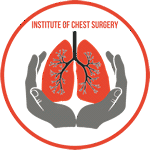What are the Different Stages of Esophageal Cancer?
Esophageal cancer is a formidable disease that affects the esophagus, the hollow tube that carries food and liquids...
+919999461292
MBBS | DNB (General Surgery, Gold Medalist) | DNB (Thoracic Surgery, Gold Medalist)
Thoracic & Lung Transplant Surgeon | Medanta – The Medicity, Gurugram

MBBS | DNB (General Surgery, Gold Medalist) | DNB (Thoracic Surgery, Gold Medalist)
Thoracic & Lung Transplant Surgeon | Medanta – The Medicity, Gurugram


A tracheoesophageal fistula (TEF) is a medical condition characterized by an abnormal connection or passageway between the trachea (windpipe) and the esophagus (food pipe). This congenital condition occurs during fetal development when the tissues that separate the trachea and esophagus fail to form correctly. TEF can lead to significant respiratory and feeding difficulties, and it requires prompt diagnosis and treatment to ensure the best possible outcome for affected infants.
See, TEF is basically an abnormal connection between food pipe (esophagus) and wind pipe (trachea). Think of it like having small hole between these two pipes, which can cause problems with eating and breathing.
It’s quite serious condition that needs proper attention. Food and saliva can enter breathing pipe, causing chest infections. But don’t worry too much – with modern surgical techniques, we can fix this problem very effectively.
Yes, there are several types, including Spontaneous (both primary and secondary), Traumatic, Tension, and Iatrogenic. Each type has distinct causes and characteristics.
The treatment depends on the cause. In cancer related fistula, surgery is not the option. Endoscopic stenting of the wind pipe and/or foodpipe is the only option. However, in benign (Non cancerous) fistula – surgery is the mainstay of treatment.
In surgery, we identify the area of communication (fistula), separate the whole structures, repair the holes and put a tissue in between the structures to prevent the re-development of fistula in future. The approach varies according to the location of the fistula. Many of such fistula can be repaired by neck, however in few cases that repair can also be performed from the chest.
Usually takes 3-4 hours. We’ll repair fistula and make sure everything is properly sealed. We use advanced techniques to ensure best results.
You’ll need to stay in hospital for 7-10 days. First few days, feeding will be through tube to allow proper healing. Complete recovery takes about 6-8 weeks.
First week after surgery, only liquid diet through feeding tube. Then we’ll gradually start oral fluids, soft diet, and finally normal food. Process takes about 2-3 weeks.
Recurrence is uncommon with modern surgical techniques. But regular follow-up is important to catch any problems early. We’ll monitor you closely.
Follow dietary instructions strictly, take medicines regularly, do breathing exercises we teach you. No smoking absolutely. Keep head end elevated while sleeping initially.
Usually can return to desk job in 4-6 weeks. Physical work might need 8-10 weeks. We’ll assess your recovery and guide accordingly.
Start with gentle walking after 2-3 weeks. No heavy exercise for 2-3 months. We’ll give proper exercise plan based on your recovery.
Initially yes, but gradually you can return to normal diet. Better to avoid very hot or cold foods first few months. Eat slowly, take small bites, stay well hydrated.
Might have temporary voice changes, but usually returns to normal in few weeks. If needed, we’ll arrange speech therapy sessions.
Note: “Remember, proper follow-up and following instructions carefully is very important for good recovery. My team and I are always here to help if you have any concerns or questions during treatment journey.”
Esophageal cancer is a formidable disease that affects the esophagus, the hollow tube that carries food and liquids...
Esophageal cancer is a formidable and often challenging disease that affects the esophagus, the muscular tube that carries...
Esophageal cancer is a challenging and potentially life-threatening condition that requires timely diagnosis and appropriate treatment. When esophageal...
Esophageal cancer is a serious and potentially life-threatening disease that affects the esophagus, the muscular tube that carries...
Esophageal cancer is a formidable adversary that can silently develop within the esophagus, the muscular tube connecting the...
Esophageal cancer is a serious and potentially life-threatening condition that affects the esophagus, the muscular tube responsible for...
MBBS | DNB (General Surgery, Gold Medalist) DNB (Thoracic Surgery, Gold Medalist)
Thoracic & Lung Transplant Surgeon
Medanta – The Medicity, Gurugram
An esteemed thoracic surgeon, excels in minimally invasive procedures (VATS & Robotic surgery) for both benign and malignant lung conditions. With a stellar academic background and international training, he is dedicated to offering compassionate and expert patient care.

Website Engineered with ❤️ by GigaWebZone, a leading web development company.
Copyright © 2025 All rights reserved.
WhatsApp us